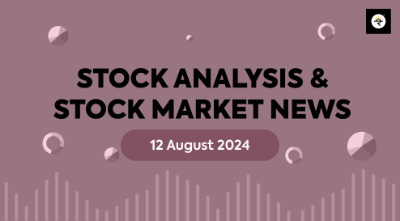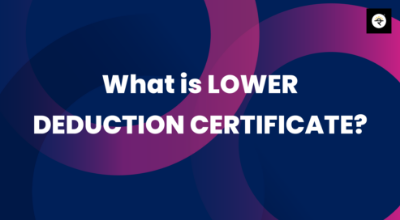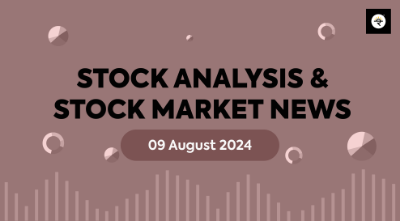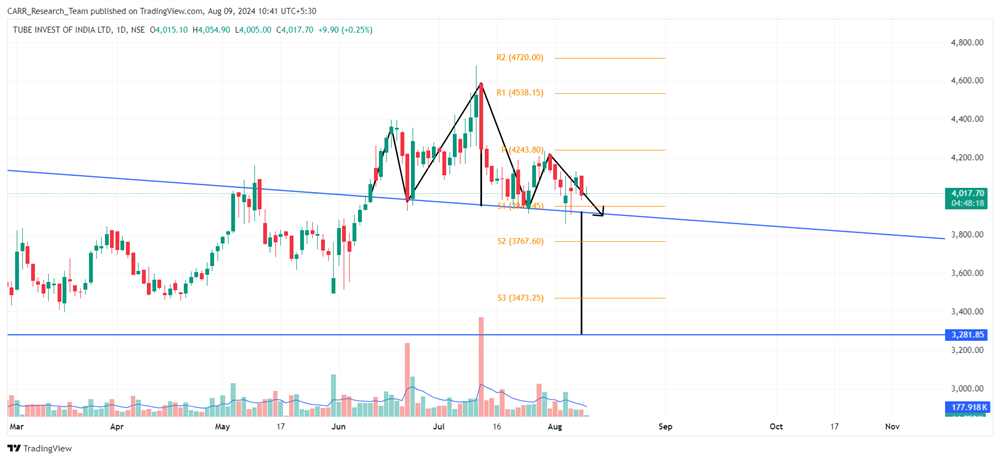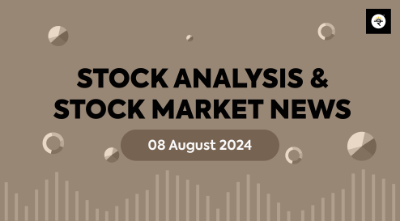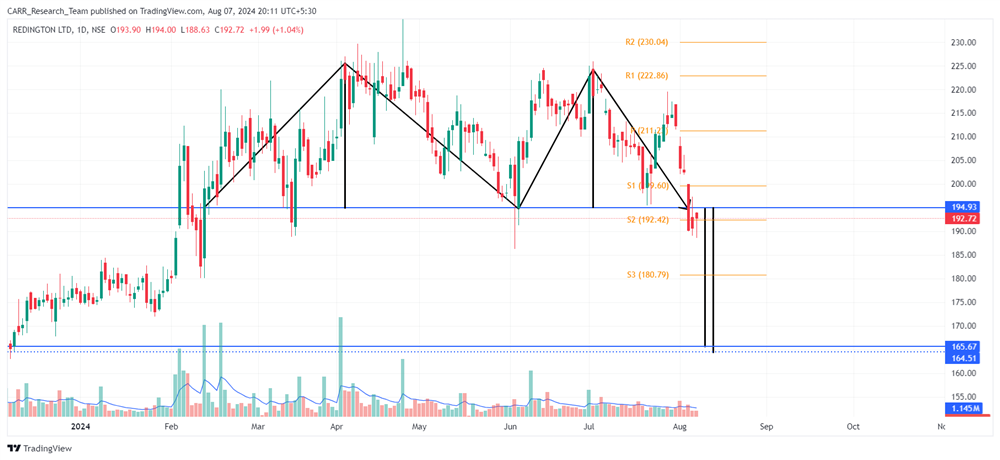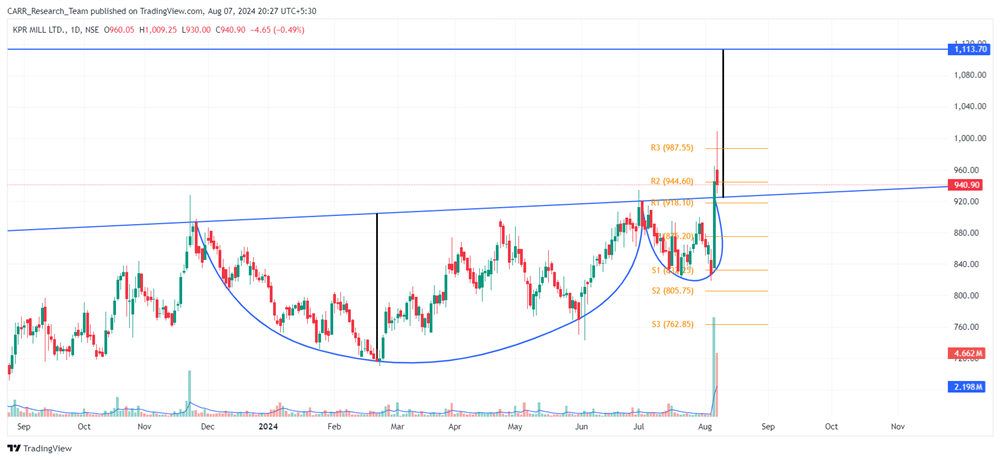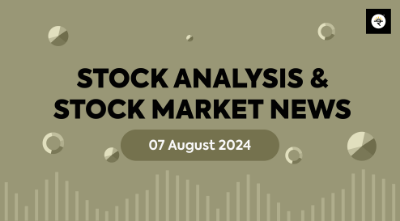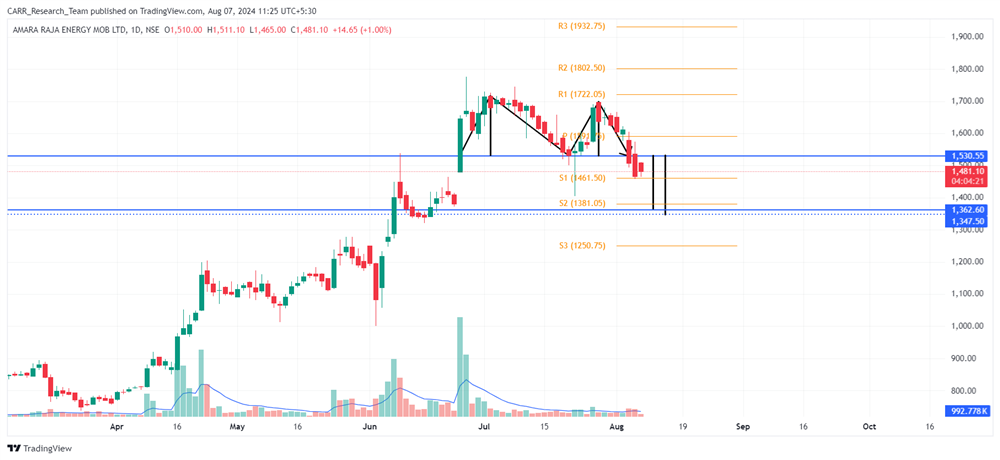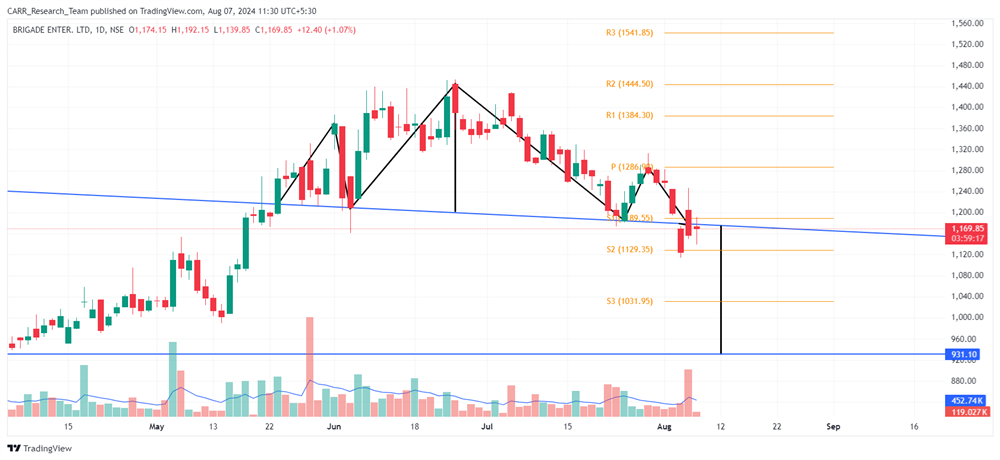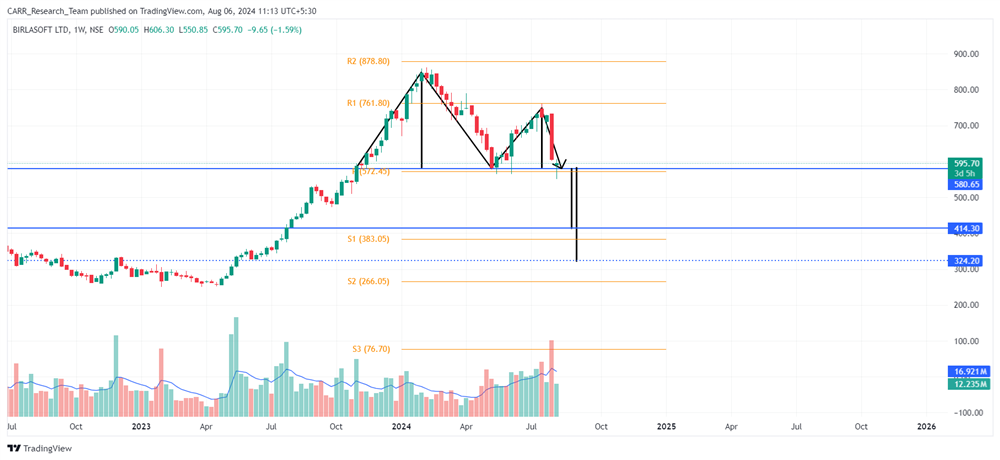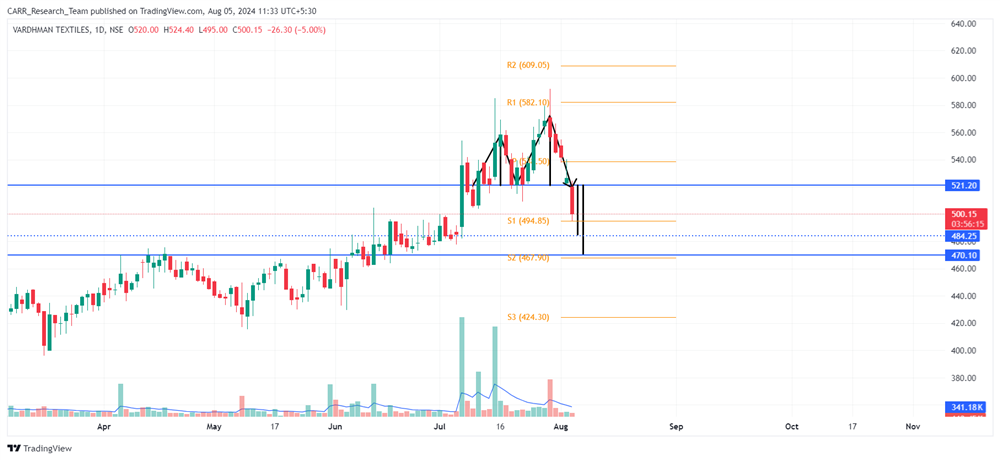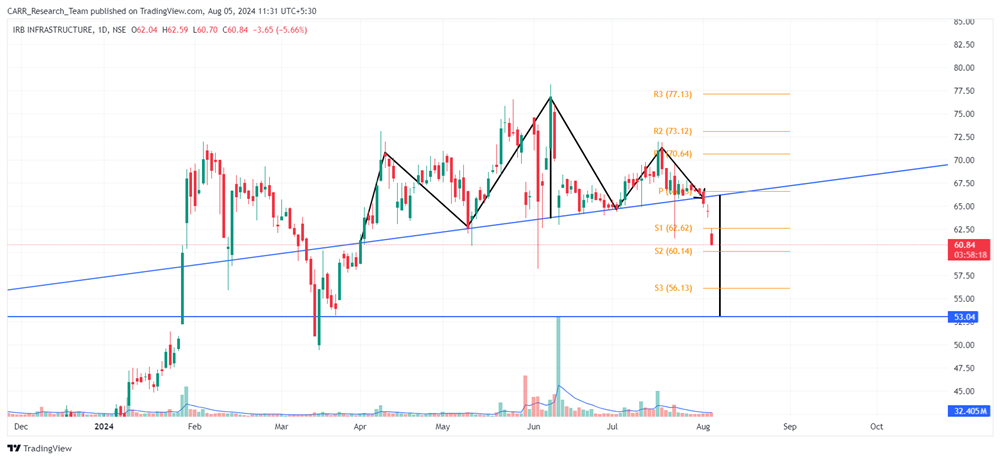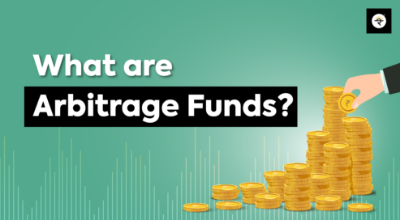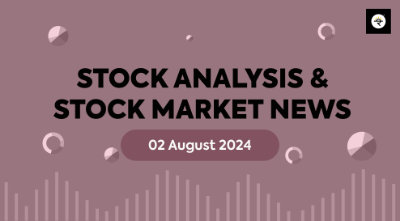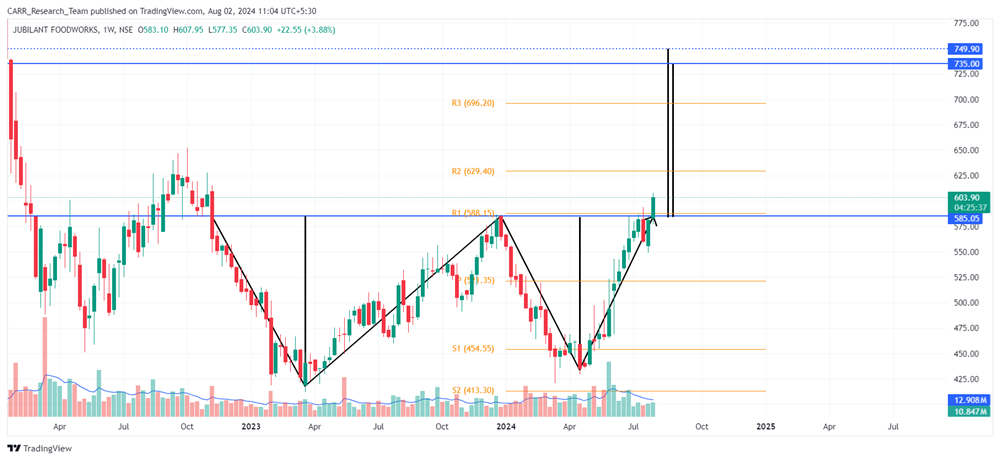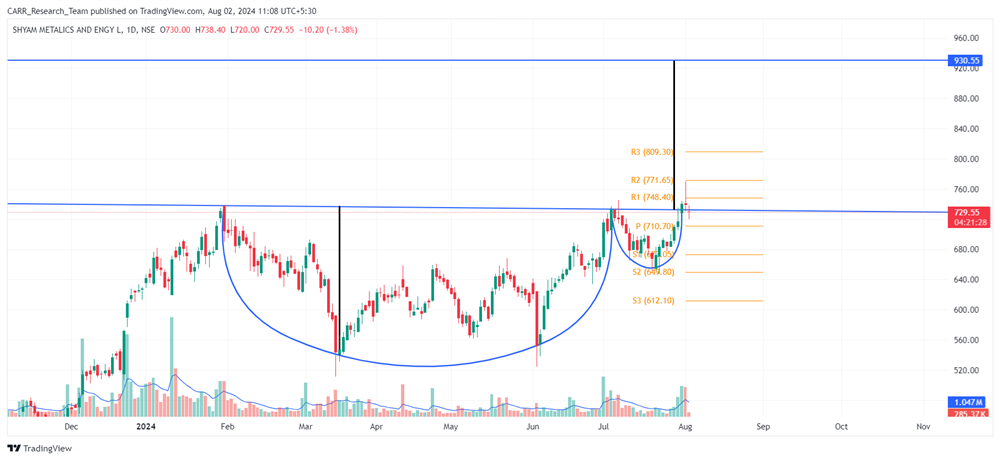Stock name: Astral Ltd.
Pattern: Double top pattern
Time frame: Daily
Observation:
Since March 2023, the stock has shown an overall upward trend. However, between April and August 2024, it formed a double top pattern on its daily chart. In today’s session, the stock is trading below the breakout line of this pattern, with significantly high trading volume. The RSI is at an extremely low level, indicating a possible retest. According to technical analysis, if the stock closes below the breakout level and maintains downward momentum, it may decline further. However, given the RSI is deep in the oversold zone, additional confirmations are necessary.
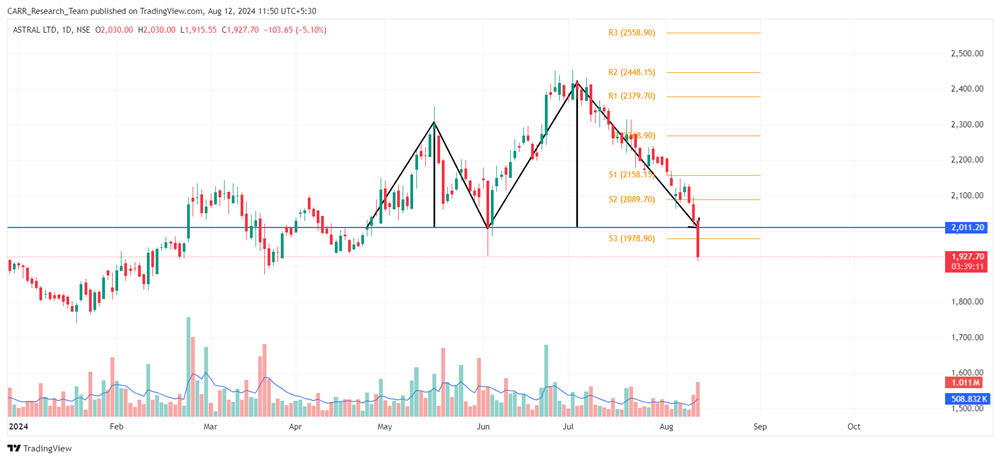
You may add this to your watch list to understand further price action.
Disclaimer: This analysis is purely for educational purpose and does not contain any recommendation. Please consult your financial advisor before taking any financial decision.

Stock name: Reliance Industries Ltd.
Pattern: Flag and pole pattern and retest
Time frame: Weekly
Observation:
From October 2023 to February 2024, the stock steadily rose. Between February and June, it stabilized, forming a flag and pole pattern on the weekly chart. In late June, the stock broke out with strong volume and a bullish MACD but soon formed an evening star candlestick pattern, leading to a retest of the breakout. The stock has now closed below the breakout line, although the RSI remains around the 50 mark. According to technical analysis, a strong rebound and additional confirmations are required to see if the stock may have further upward movement.
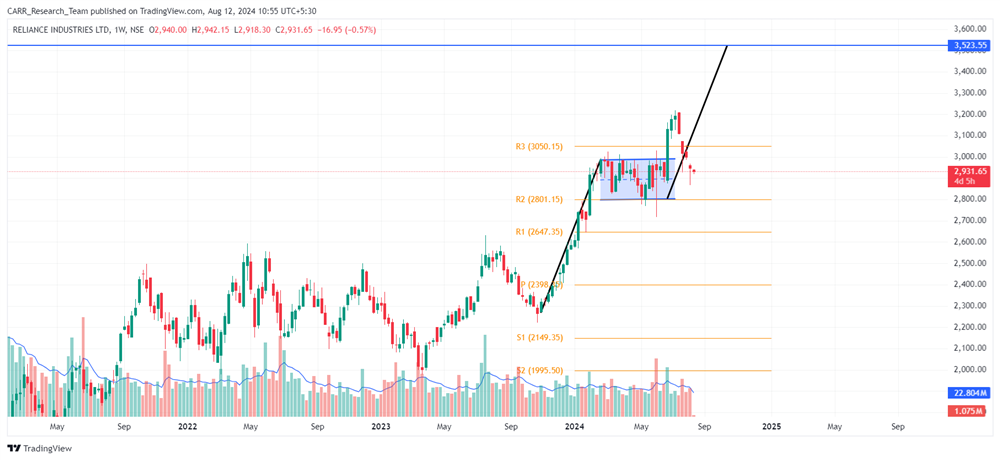
You may add this to your watch list to understand further price action.
Disclaimer: This analysis is purely for educational purpose and does not contain any recommendation. Please consult your financial advisor before taking any financial decision.
News for the day:
- Godrej Properties, the real estate arm of Godrej Industries, has acquired a 90-acre land parcel in Khalapur, Raigad district, Maharashtra. Located near Karjat Khopoli Road, the land offers approximately 1.7 million sq ft of saleable area, primarily for residential plotted development. Khalapur is considered a promising area for such projects, especially with its proximity to Mumbai and the upcoming Navi Mumbai International Airport, which is expected to improve access to the region.
- Adani Group stocks dropped by up to 7% following renewed controversy related to the Adani vs. Hindenburg dispute, leading to a market loss of approximately Rs 53,000 crore. The decline in share prices was triggered by allegations against Sebi chief Madhabi Buch, accusing her of potential conflicts of interest. Adani Green Energy suffered the most, falling 7%, while Adani Total Gas, Adani Power, and others also saw significant declines. Despite the controversy, market analysts downplayed its impact, and Sebi reassured investors of ongoing investigations and urged caution.
- Amara Raja Batteries has signed a Memorandum of Understanding (MoU) with Piaggio India, a subsidiary of the Italian motor vehicle manufacturer, to develop and supply Lithium Iron Phosphate (LFP) lithium-ion cells and chargers for electric vehicles, specifically targeting Piaggio's 3-Wheeler EVs. The collaboration will also focus on creating battery packs for Piaggio's upcoming 2-Wheeler offerings, with production taking place locally in India. This partnership is part of Amara Raja's broader efforts to support India's energy transition and strengthen its position in the EV market.
